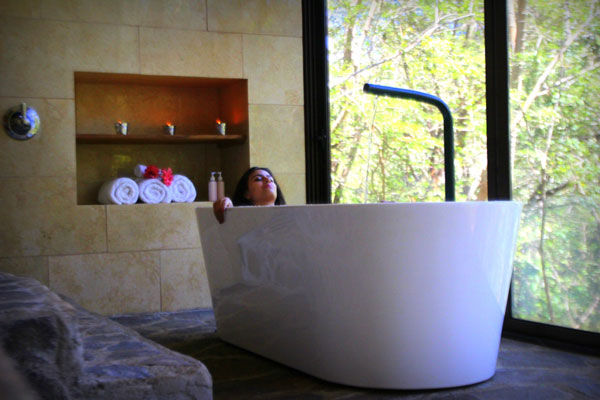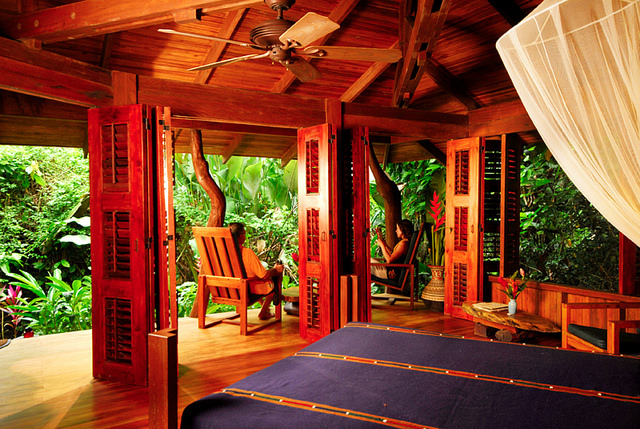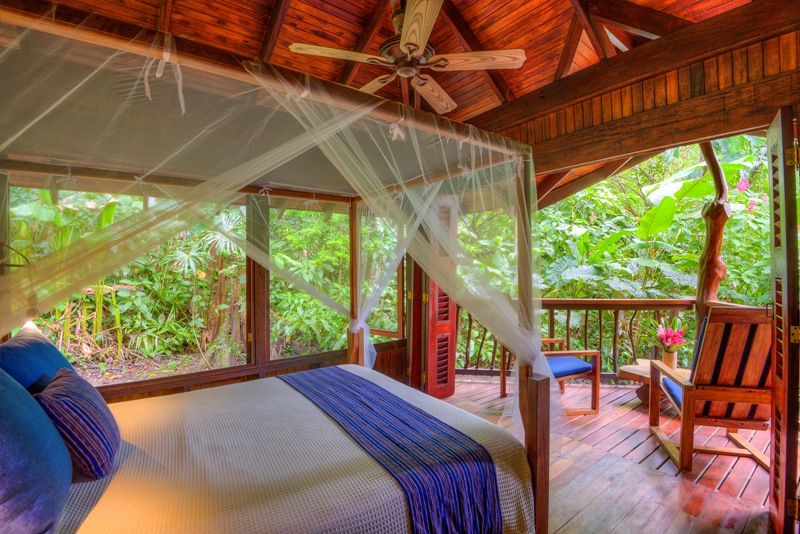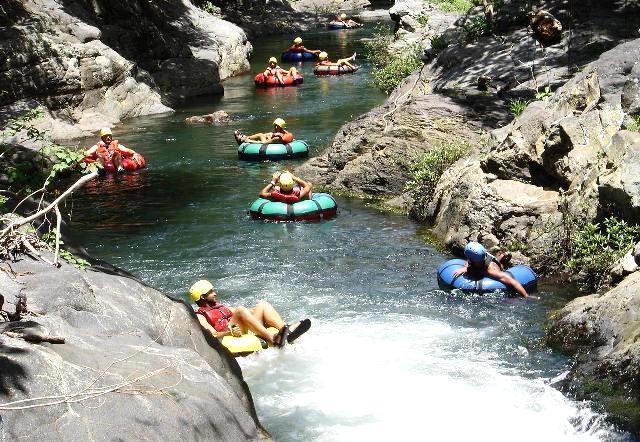You definitely have to be up for an adventure to go kayaking in the ocean at night. At first, the experience can be a little unnerving. The slightest splash makes you jump. What was that? Shark? Fish? Whale? It was probably your own kayak paddle hitting the water, but the fact that you can’t see well puts you on edge.
We humans are better adapted visually for daylight than nighttime. But when you let your eyes adjust to the dusk – and relax – an entirely new spellbinding world opens up. As if by magic, suddenly you are aware of night birds softly calling, fish gentle stirring the water’s surface, and the peacefulness of floating on a magnificent live body of water.
On Costa Rica’s Nicoya Gulf, near the southern end of the Nicoya Peninsula, this is especially true. Just below Vista Las Islas Hotel, near the ferry port of Paquera, Organos Beach is a tranquil wide bay with a long sandy beach, surrounded by jungle. There are really no waves, so casting off from shore in a kayak is easy. Waters in this area are calm, and the kayak guides say they’ve never seen sharks.
Kayaking in the dark is a completely different experience than paddling during the day. All of your senses are alert – hearing, smell, sight, and touch. If the moon is out, the coastline and the Nicoya Gulf’s little islands cast shadows on a shimmering silver sea. Listen for the sound of a pelican taking flight or fish jumping out of the water.
All of your senses are alert – hearing, smell, sight, and touch. If the moon is out, the coastline and the Nicoya Gulf’s little islands cast shadows on a shimmering silver sea. Listen for the sound of a pelican taking flight or fish jumping out of the water.
When there is no moon at all, it’s even better. Then you can see the ocean light up with bioluminescence. The water around your sea kayak will glow as you create waves, and every paddle stroke is like a firework. It is as if you are paddling across a liquid sky of blue stars.
According to Wikipedia, bioluminescence is the emission of visible light by a living organism as a result of a natural chemical reaction. Bioluminescence occurs in a remarkable diversity of marine animals and microbes – bacteria, plankton, fish, jellyfish, squid, etc. It also exists in some fungi, microorganisms and terrestrial invertebrates – think of fireflies and glow worms.
 Sailing on a darkened sea or walking along the beach at night, especially closer to the equator, you will often see sparkling lights in the water. Sometimes thousands of square miles of ocean shine with the light of bioluminescent bacteria or plankton. Bioluminescent light tends to be in the blue and green spectrum – the wavelengths that can transmit most easily through seawater, reports Science Daily.
Sailing on a darkened sea or walking along the beach at night, especially closer to the equator, you will often see sparkling lights in the water. Sometimes thousands of square miles of ocean shine with the light of bioluminescent bacteria or plankton. Bioluminescent light tends to be in the blue and green spectrum – the wavelengths that can transmit most easily through seawater, reports Science Daily.
Think of the scene in the 2012 movie “Life of Pi” when the night sea glittered blue around Pi’s raft and a glowing whale jumps out of the water. Or recall the illuminated neon-colored forest in “Avatar.” Both are great examples of bioluminescence.
Hotel Vista Las Islas, with tour operator Bahia Rica, offers an unforgettable night kayaking tour on the placid waters of Costa Rica’s Nicoya Gulf at Playa Organos. Nearby are Tambor Beach and the famous Tortuga Island, off of the southern Nicoya Peninsula. The area is full of natural beauty and rich in biodiversity.
on the placid waters of Costa Rica’s Nicoya Gulf at Playa Organos. Nearby are Tambor Beach and the famous Tortuga Island, off of the southern Nicoya Peninsula. The area is full of natural beauty and rich in biodiversity.
The luxury boutique hotel sits up on a promontory above the beach. Well-appointed rooms have private balcony terraces and ocean views of the Nicoya Gulf and Tortuga Island. Vista Las Islas Hotel is conveniently located just a 10-minute drive away from the Paquera ferry terminal. Ferries travel several times daily from the Central Pacific port town of Puntarenas to Paquera. Additionally, the small airstrip at Playa Tambor receives several national flights daily on both Sansa Airlines and Nature Air (only 20 minutes from San Jose).
By Shannon Farley



















